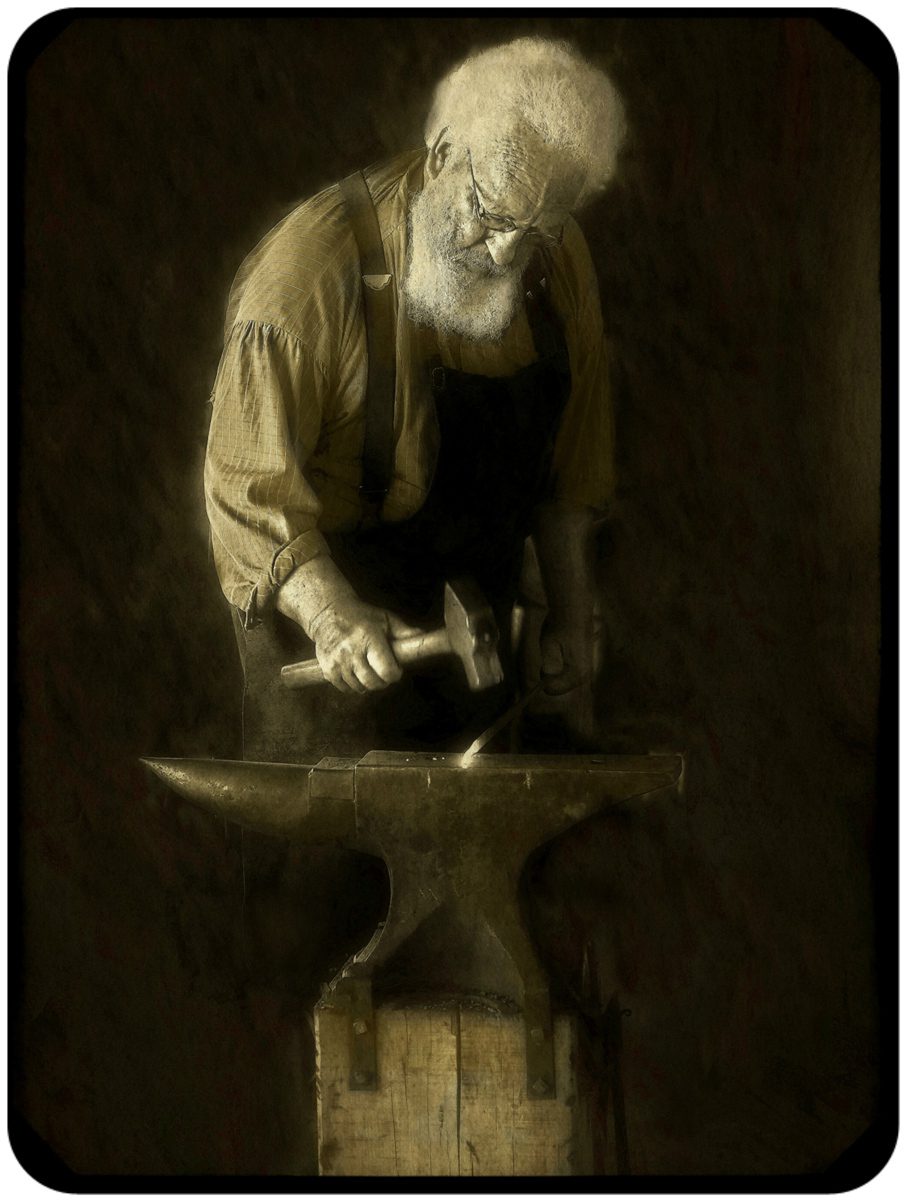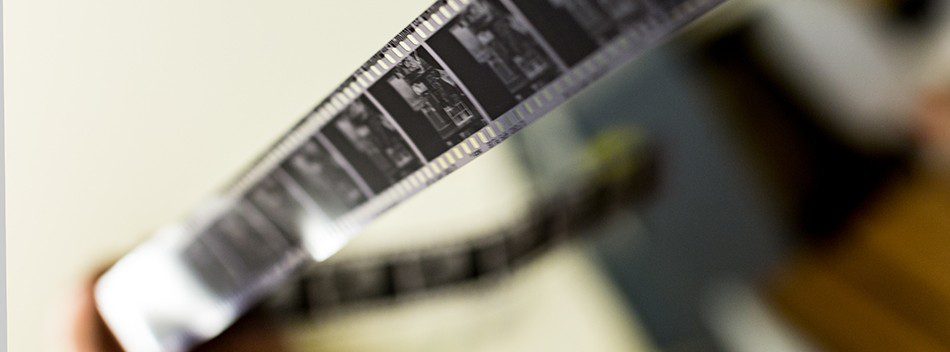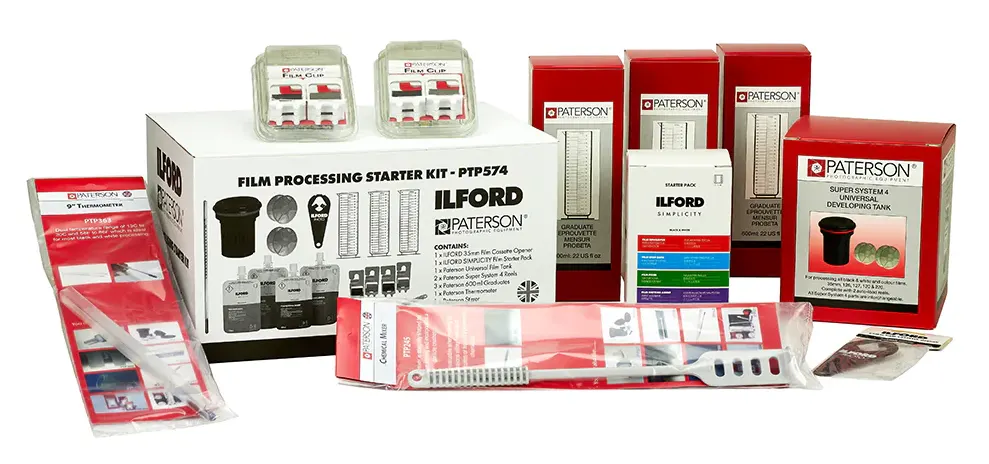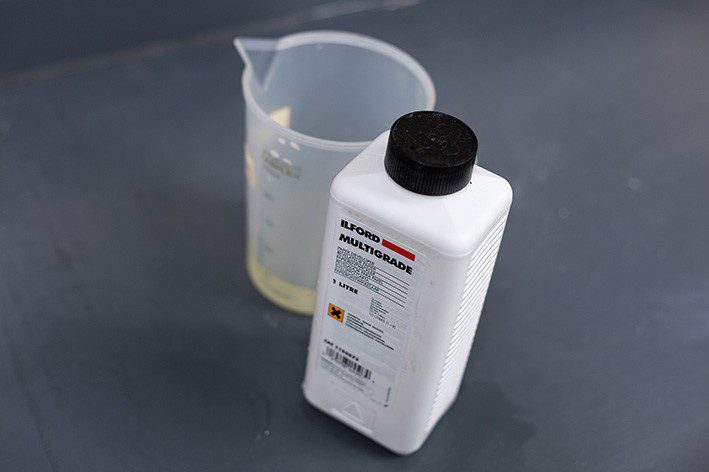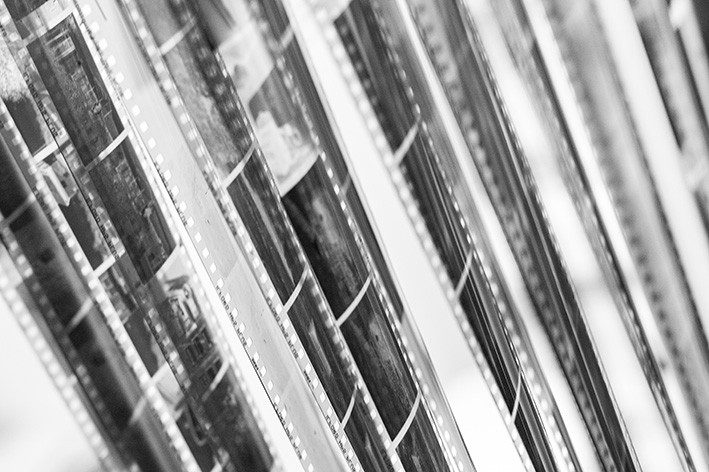B&W film photography is gaining a new generation of sophisticated photographers who want the personal experience of making fine art B&W images. The drawback has been processing of B&W film relying on commercial labs. These labs are scarce and expensive and deny photographers the enjoyment of this magical process. Ansel Adams placed great importance on this ‘hands wet’ processing of film.
- 1 x Ilford Simplicity Chemistry Kit
- 1 x Ilford 35mm Cassette Opener
- 1 x Paterson 2 35mm reel tank with 2 reels
- 1 x Paterson thermometer
- 1 x Paterson Chemical Stirrer
- 3 x 600ml Paterson graduates
- 2 x sets of Paterson film drying clips
You’ll also need scissors and a timer.
Before you get your hands wet you need to practice loading film onto the processing reel in daylight. I suggest you cut about 10” from a roll of unexposed 35mm film to use for practice in room light. The film has a tang for easy loading in a 35mm camera. Cut this off your test strip and use this as a template to cut a similar tang on the film cassette leader. Expect this cassette to give 24 or so frames rather than 36. Without this practice it’s guarantee you would find yourself uttering strong expletives while damaging your precious images. The Paterson reels load a whole lot easier than the steel ones. Once you have the film threaded on the reel then simply ratchet the film on to the reel. Now slip the loaded film reel onto the plastic spigot, then into the tank, secure the tank lid and now turn on the lights.
Loading your film you must be in total darkness. A light tight changing bag can be useful which I do not recommend. I suggest you find a room you can make light tight where you can have a cozy place to arrange everything nice and handy to load your film.
Now you have your film in the light sealed Paterson tank you’re ready to get your hands wet. The Harman Ilford started kit contains, the developer, stop bath and fix, all dilute with tap water to make a volume of 600ml each, don’t be a fanatic about the temperature, just stay ball park close (plus or minus 2 degrees) 68 degrees f is ideal.
Processing sequence:
- Developer: 5.5 minutes for HP5+ (my favourite ILFORD film). 4 inversions of the tank at start and then once every 30 seconds.
- Stop bath: 30 seconds with constant agitation.
- Fixing time: 3 minutes with 6 inversions at start and then 2 inversions every minute.
- Washing: 5 minutes in briskly running water contribute greatly to your film’s archival properties, if very serious about longevity go all out for 10 minutes.
- Wetting agent rinse is to prevent drying marks from water droplets, my recommendation is 1 minute with very gentle agitation using the twirling rod. Them remove film from the reel and using the Paterson film clips, clothes pins will work, hang the film to dry perhaps on your bathroom shower curtain rod.
This tactile experience has gifted you with a deeper personal appreciation for the art of B&W photography.
With friendly spring weather there’s no excuses, so get out shooting!!!
Best to all!
Discussed Items
About the Author – Crombie McNeill
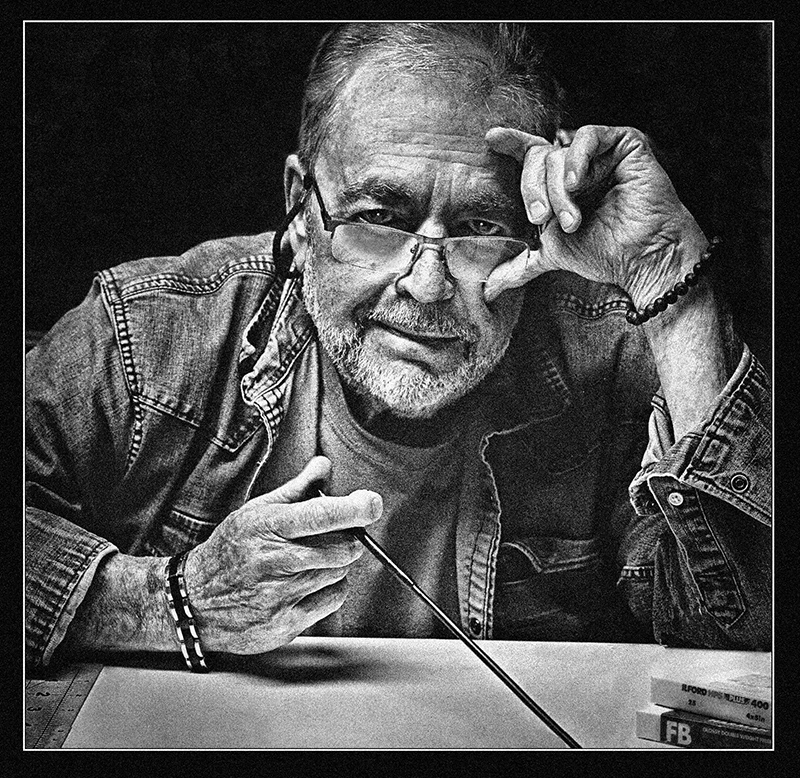
PHOTONews Flash is honoured to see our contributing editor Crombie McNeill featured in CTV News Ottawa. Tune in to hear Crombie’s story and his mission to help those experiencing homelessness.
Crombie McNeill is a unique artist. He’s a world travelled photographer with numerous awards and has been recognized as one of the best editorial photographers in North America. His credits include Time, Newsweek, ELLE, Life, National Geographic, Sports Illustrated, Chatelaine, Paris Match, McLean’s, En Route to name but a few.
His Odyssey lead him from the Arctic to high fashion magazine shoots to Olympic Games, World Cup events, the depths of the Great Barrier Reef to the altitude with the Snow Birds, interwoven with civil war in Africa, Royalty, presidents to paupers world wide. Not to mention frozen toes at the North Pole.
His photography has been exhibited in galleries across Canada, the United States and Europe and has three books to his credit.
Not one to leave behind the uniqueness of traditional film he’s evolved a blending of photography with both hand applied and computer processing to produce truly unique images.
“The art of photography for me” says Crombie “is to convey a timeless essence with a hint of mystery”.
The National Archives predicts he will be credited as one of Canada’s most significant photographers and is on the list for The Order of Canada. The National Art Gallery of Canada has some of his fine art B&W prints included in their permanent collection.
Crombie is now happily retired, in that he no longer accepts editorial or commercial assignments He now lives in Aylmer, with his wife Sue. “This retirement”, he’s delighted to says, “allows me the freedom to search for those magical B&W images, and to determine the ideal technique by which it should be captured and presented.
Crombie often returns to the peaceful amber glow of his wet darkroom as a respite from his extensive digital lab and art board.
Please enjoy!



